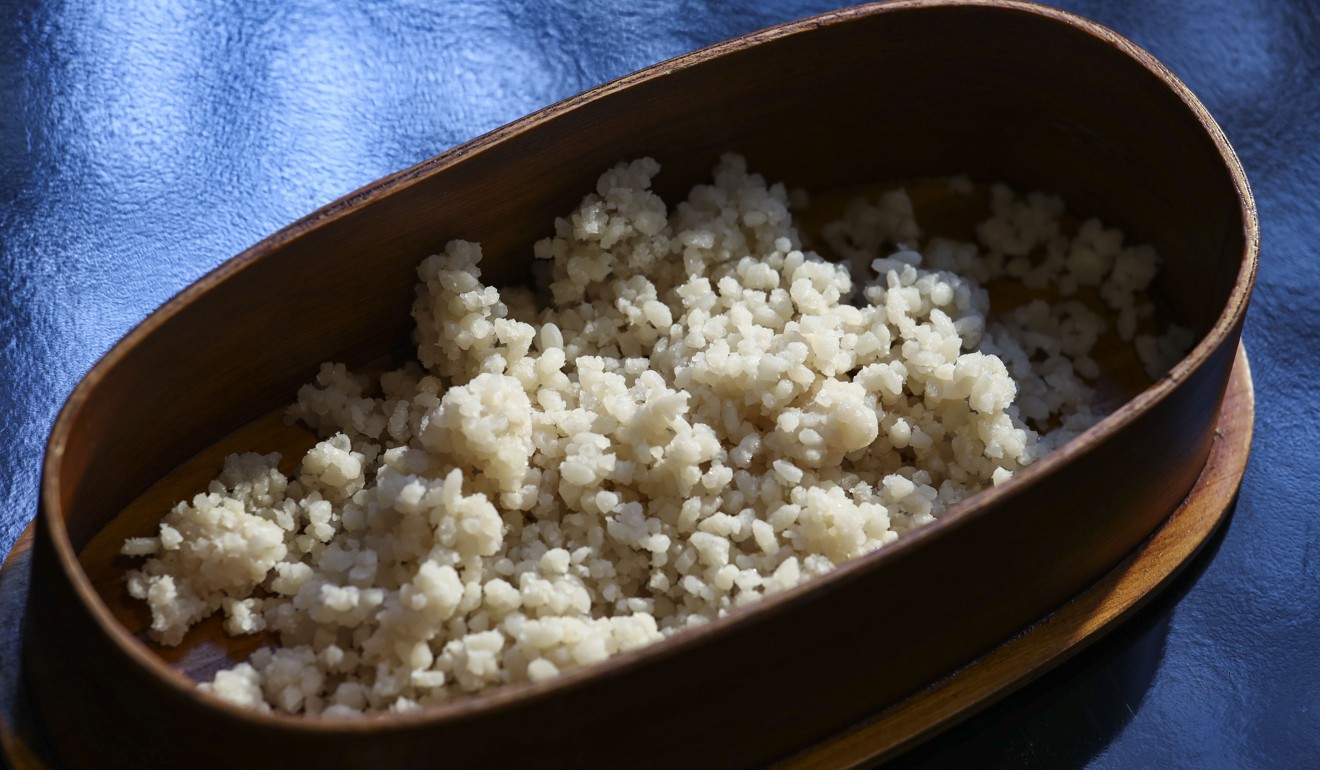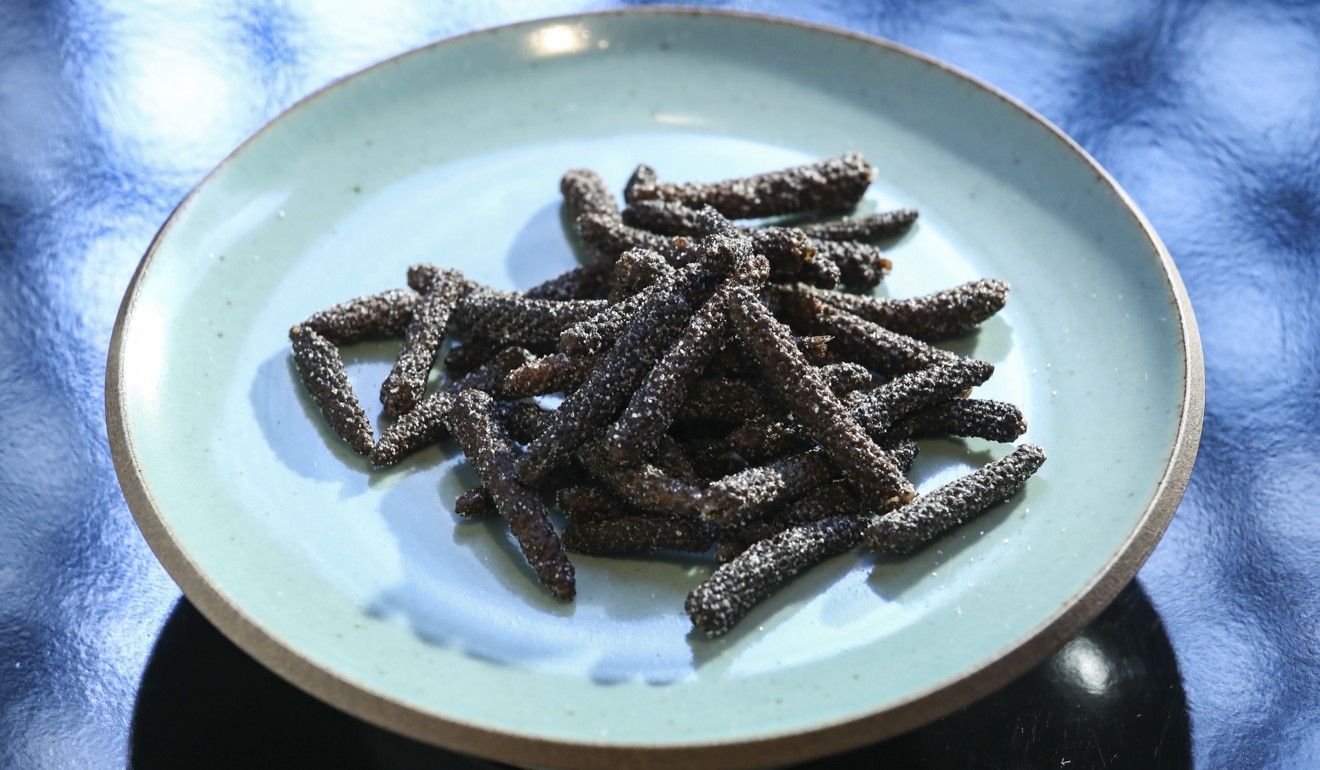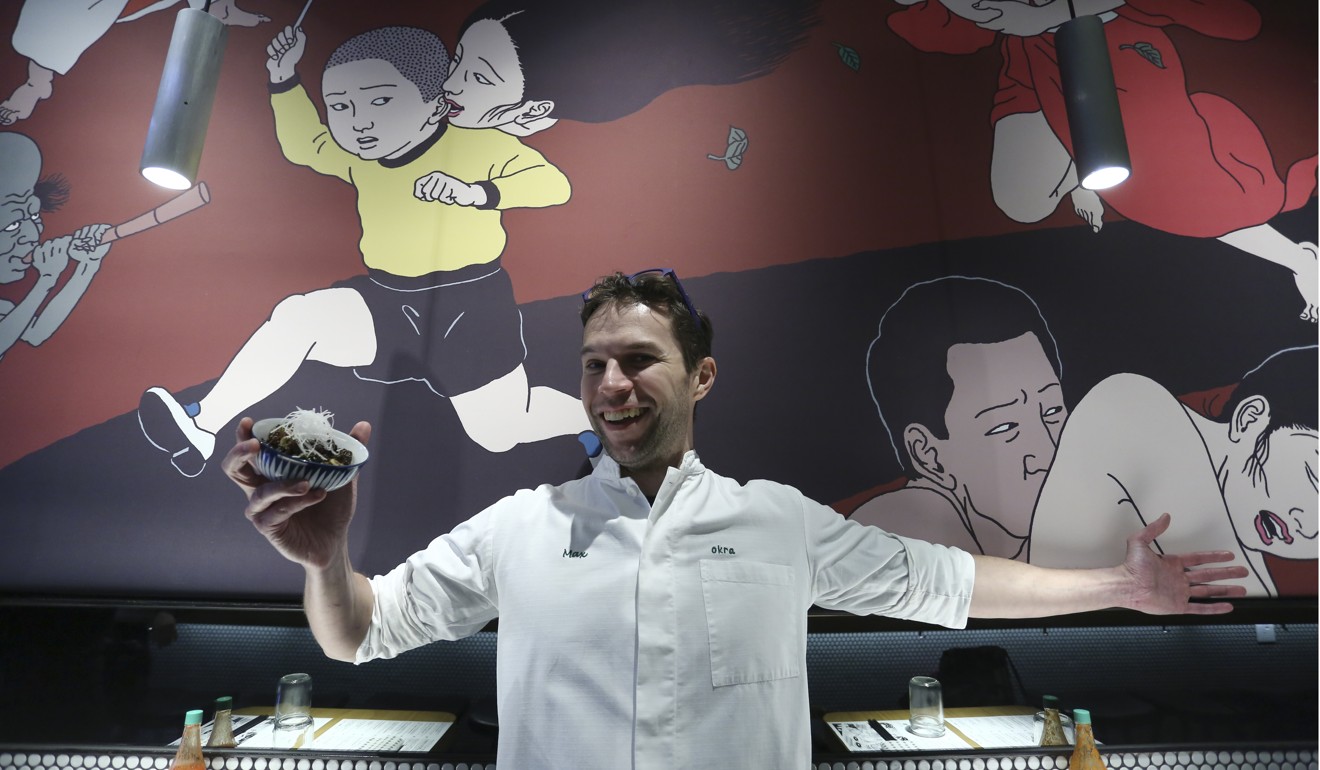
How an American became a top sushi chef, and his passion for mouldy rice, sake and sporks
Be it at home or in his restaurants, for Max Levy, the chef behind the Okra omakase and izakaya in Hong Kong, Japanese flavours lead the way – and he uses some interesting techniques and ingredients to create them
Max Levy is a walking encyclopaedia of ingredients, and one of the most underrated talents in Hong Kong’s culinary scene. The American chef left his hometown of New Orleans at age 17 and has worked at some of the best sushi restaurants in Japan, New York and elsewhere.
After living in Beijing, where he ran the Okra 1949 restaurant (now closed) for more than four years, Levy moved to Hong Kong in 2015 to set up the two-storey Okra Bar and Okra Kitchen – the former an omakase concept and the latter a casual izakaya – in Sai Ying Pun, a traditional but fast-gentrifying neighbourhood towards the western end of Hong Kong Island.
“Okra, in my mind, is what a true izakaya is, or at least from my experience in Japan. Similar to what you would think of as a bistro in France,” says Levy. “Izakayas are drinking places that focus on beer, shochu or sake, and the food is meant to go along with that.”
The menu is a mishmash, and our single focus is good ingredients and to have everything prepared in-house
What sets izakayas apart from each other, according to Levy, are their menus and how they curate regional culinary influences.
“The menu is a mishmash, and our single focus is good ingredients and to have everything prepared in-house,” he says.
While Okra Hong Kong doesn’t identify itself as a Japanese restaurant, there is no denying the influence, from its quirky decor and house-brewed sakes to Levy’s current favourite ingredient: kome-koji.

Koji is a type of mould – a fungus called Aspergillus oryzae – that’s best known for its use in making sake. When added to rice, you get kome-koji, which Levy has been using to ferment, among other things, firefly squid – it gains a strong fermented flavour, as well as sweetness from the rice.
“We’ve also been using [kome-koji] to marinate the pompano fish. The kome-koji gives it a sweet flavour, almost rice wine-like but without that sour alcohol taste,” says Levy. “I take the kome-koji, mix it with salt, steam it and let that sit for 10 days. After that I blend it up and paste it on the fish. We usually let it marinate for two days.”
How to eat sushi the right way, and why you should obey chef’s rules to get the most out of that U$450 omakase meal
Levy loves to collect condiments. From a recent trip to Kagoshima prefecture, on the Japanese island of Kyushu, the chef brought back a bottle of akumochizake, which emits a savoury aroma but tastes syrupy.
“[Akumochizake] is made just like sake, except instead of pasteurising it, they add ash. This causes the solution to go alkaline, which inhibits the growth of bacteria. It’s the oldest and most traditional way of making sake in Kyushu,” he explains.
“Akumochizake is mainly used for cooking, and I use it to sweeten sauces. I guess it’s like the difference between using honey and sugar.”

While Levy makes an effort to source as many local ingredients as possible – “There are just as good ingredients here, they’re just harder to find than in Japan” – he admits that for certain products, such as sushi rice, he looks only to Japan.
“I’ve been working with these sushi-rice farmers for 12 years now. There are similar products in Hong Kong, but they are not the same; the flavours are a lot stronger here. In Japan, soy sauce is usually used with cold dishes for dipping, whereas in Cantonese cuisine, it’s used for cooking. It’s stronger but you’re putting it up against a lot of fat.”
At home, Levy likes to use eminishiki, an old hybrid of Japanese sushi rice that is rounder in shape with a nuttier flavour.
“When I eat grains I want them to taste like grains rather than sugar,” he says. “The rices that are popular for sake and sushi are popular because they are sweeter.”

Sake is another of Levy’s passions. He works with a brewery outside Fukuoka, also on Kyushu, to produce small-batch sake for the restaurant. But he has noticed many diners order daiginjo sake (which has at least half of the grain polished off) or a cold sake to pair with their food because they think more expensive means better.
As a general rule of thumb, sakes that are less polished are going to have a fuller, deeper flavour,” Levy says. “If you’re ordering dishes braised in soy sauce, or roasted or stewed dishes, you don’t want a ginjo [a minimum of 40 per cent of the grain polished off] or a daiginjo, because the more they polish the rice away, the lighter it will be. A lot of that flavour is going to be lost in the food.”
Levy recommends enjoying sushi with unpasteurised sake, which tends to be more yeasty and helps to bring out the fish’s flavour. Those who prefer a lighter daiginjo can pair it with lighter fare such as Kyoto-style vegetarian dishes, sashimi or tofu.

The practice of ageing raw fish was a hot topic in Hong Kong a couple of years ago, with Levy speaking out to break the misconception that sashimi is better fresh. But how about ageing fish at home? The chef doesn’t recommend it.
“Commercial refrigerators are cooled by cooling fans, which circulate the air and dehumidify the environment. Home fridges are cooled by cooling coils for energy efficiency. The lack of air circulation is why mould grows faster in home fridges,” he explains. “To age fish safely at home means you’ll have to open your fridge five or six times a day and let fresh air in.”
Why Hong Kong chefs age fish used in sashimi and sushi
The chef rarely finds time to cook at home, but when he does, he likes to keep it simple and uses his favourite utensil: the spork.
“If I’m cooking for myself, I’m usually eating with the same thing I cook with, mostly because it’s 2am and I don’t want to end up with a bunch of dishes to clean.
“My current spork is a titanium one,” Levy says with a grin. “I also have a really good rubber cutting board. It’s antimicrobial. I don’t use any chemicals at home. I use enzyme and natural soaps, so it’s important to have that so I don’t get sick.”
